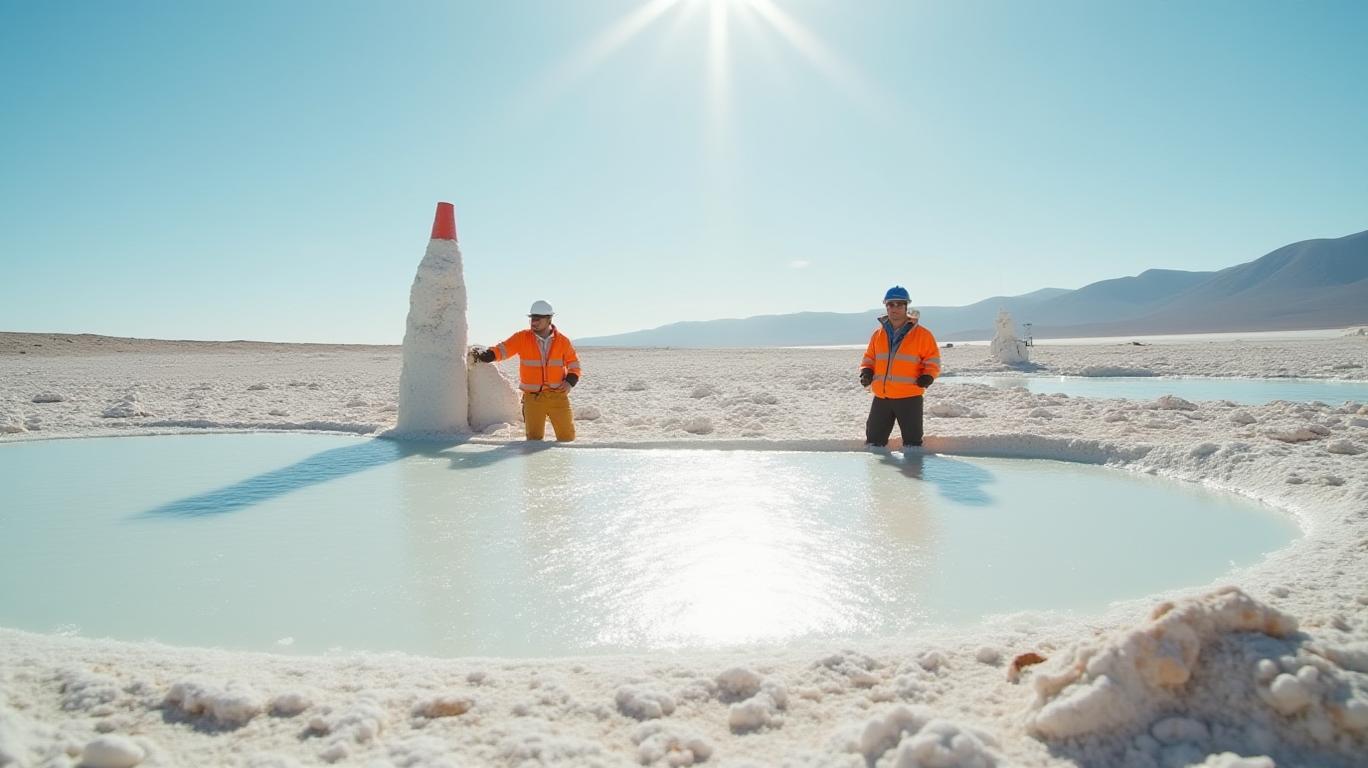The Maricunga Play: Why Rio Tinto and Codelco’s Lithium Venture is a Game-Changer for the Energy Transition
The global energy transition is no longer a distant vision—it’s a sprint. Electric vehicles (EVs) are projected to claim 40% of new car sales by 2030, and lithium, the lifeblood of their batteries, has become the most coveted commodity of this era. Yet the lithium market is in turmoil: oversupply has slashed prices by 31% since 2022, leaving investors wary. But in the Atacama Desert of Chile, a bold partnership is emerging as a beacon of stability and innovation.
The Salar de Maricunga lithium project, a joint venture (JV) between Rio Tinto and Codelco, represents a landmark strategic play in securing critical minerals for the EV revolution. With a $900 million financial commitment, cutting-edge technology, and a regulatory framework designed for sustainability, this venture is not just a bet on lithium—it’s a blueprint for how to navigate the energy transition’s twin imperatives: scale and ESG compliance.
The Strategic Edge: High-Grade Lithium and Global Demand
Chile’s Salar de Maricunga holds one of the world’s highest-grade lithium brines, with concentrations so rich that traditional extraction methods would require only one-third the time and water of projects in less-endowed regions. But Rio Tinto and Codelco are skipping “traditional.” Instead, they’re deploying Direct Lithium Extraction (DLE), a technology that promises to revolutionize the industry.

DLE uses chemical processes to extract lithium directly from brine, bypassing the months-long evaporation ponds of conventional methods. This slashes water usage by up to 90% and reduces production time to weeks instead of years. For a world demanding both faster EV adoption and stricter environmental standards, this is a game-changer.
The financial stakes are equally monumental. Rio Tinto’s $900 million commitment—split into $350 million for feasibility studies, $500 million for construction, and a $50 million production milestone—signals ironclad confidence. This isn’t a speculative gamble; it’s a structured, phased rollout designed to deliver 200,000 tons of lithium carbonate equivalent (LCE) annually by 2028. At full capacity, that would position the project as one of the top five lithium producers globally, rivaling Australia’s mines and Argentina’s emerging projects.
Regulatory Resilience and ESG Alignment
Chile’s stringent environmental regulations have long been a hurdle for lithium developers, but they’ve also become a competitive advantage. Codelco, Chile’s state-owned copper giant, brings deep local expertise and political clout to the table, ensuring the project adheres to the highest ESG standards. The JV’s focus on minimizing water use and investing in infrastructure—like a solar-powered grid and upgraded road networks—aligns perfectly with the ESG mandates now driving institutional investing.
Meanwhile, Rio Tinto’s global footprint adds strategic heft. Its Jadar project in Serbia, revived in 2024 after environmental hurdles, and its Rincon project in Argentina (targeting 60,000 tons/year LCE) create a diversified lithium portfolio. But Maricunga is the crown jewel: its high-grade brine and DLE tech could reduce production costs by up to 40%, shielding it from the price volatility plaguing the sector.
While lithium’s current price slump has spooked traders, the long view favors investors who can endure the near-term pain. EV demand is projected to require 3.5 million tons of LCE annually by 2030—nearly triple today’s supply. Companies that control low-cost, high-quality lithium deposits and sustainable extraction methods will dominate.
The Investor Playbook: Timing and Tenacity
Critics will point to the project’s 2030 production timeline, but that’s precisely the point. The energy transition isn’t a quick flip—it’s a generational bet. Investors who commit now will secure a stake in a project primed to deliver outsized returns as lithium prices rebound.
The Maricunga JV also offers a rare combination of offensive and defensive strengths:
- Offensive: DLE’s efficiency and scalability could make it a template for future lithium projects, creating a first-mover advantage.
- Defensive: Chile’s regulatory rigor ensures the project’s ESG credibility, insulating it from activist campaigns or supply-chain scrutiny.
Codelco’s state ownership adds geopolitical stability, while Rio Tinto’s balance sheet provides the financial firepower to weather lithium’s cyclical dips.
Conclusion: A Cornerstone for the EV Era
The Salar de Maricunga project isn’t just about lithium—it’s about redefining what it means to lead in the energy transition. With its technological edge, financial muscle, and ESG integrity, this venture is a rare opportunity to invest in a company’s future dominance.
The lithium market’s current slump is a buying opportunity for investors with vision. Rio Tinto’s $900 million bet is a vote of confidence in a sector that will only grow more vital. By 2030, the world won’t just need lithium—it will demand it from operators who can produce it faster, cleaner, and smarter than the rest.
This is a bet on the future of transportation—and the planet itself. For investors, the question isn’t whether to act, but whether to act now.
The time to secure a stake in the energy transition’s backbone is now.

Comments
No comments yet